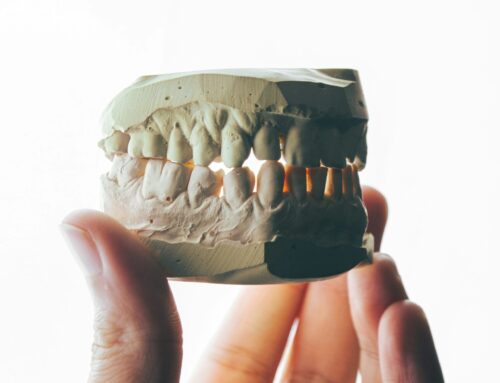Frozen Shoulder, also known as adhesive capsulitis, is a condition of the shoulder joint characterized by progressive stiffness and pain. Other common terms include periarthritis humeroscapularis and shoulder stiffness. These terms describe the same symptoms and phenomena: a thickening and tightening of the joint capsule, which significantly restricts mobility.
Symptoms
The symptoms of Frozen Shoulder typically develop in three consecutive phases:
- Freezing Stage:
- This phase can last between 6 weeks and 9 months.
- Increasing pain, especially with movements of the arm and shoulder.
- The pain is often worse at night and can disturb sleep. Therefore, as the phase progresses, shoulder mobility gradually decreases.
- Frozen Stage:
- This phase usually lasts 4 to 12 months.
- The pain begins to decrease gradually during this phase but remains present.
- Shoulder mobility is significantly restricted.
- Daily tasks such as dressing, lifting objects, or simple movements can become difficult or impossible.
- Thawing Stage:
- This phase can last between 6 months and 2 years.
- Shoulder mobility gradually improves.
- The pain continues to decrease.
- The complete restoration of normal mobility and function, however, can vary and depends on individual factors.
Causes
The exact causes of Frozen Shoulder are not fully understood, but several risk factors and potential triggers have been identified:
- Trauma or Injury: An injury or surgery to the shoulder can lead to restricted movement and subsequent Frozen Shoulder.
- Immobilization: Prolonged immobilization of the shoulder, such as wearing a sling after an injury, can promote the development of this condition.
- Systemic Diseases: Conditions such as diabetes mellitus, thyroid disorders (hypothyroidism or hyperthyroidism), heart disease, and Parkinson’s disease are associated with an increased risk.
- Autoimmune Disorders: An overreaction of the immune system can play a role by causing inflammation of the joint capsule.
- Inflammatory Processes: Chronic inflammation in the shoulder or surrounding structures can thicken and restrict the joint capsule.
Epidemiology
Frozen Shoulder affects about 2-5% of the general population. There are some demographic patterns:
- Age and Gender: Frozen Shoulder most commonly occurs in people aged 40 to 60 years. Women are more frequently affected than men.
- Geographic Differences: There are no significant differences in the prevalence of Frozen Shoulder in different geographic regions.
- Association with Diabetes: Individuals with diabetes have an increased risk. About 10-20% of diabetics develop Frozen Shoulder, and the risk is even higher in insulin-dependent diabetics.
Treatment Methods
The treatment of Frozen Shoulder focuses on alleviating symptoms and restoring mobility. This can be achieved through a combination of medication, physical therapy, and sometimes invasive procedures.
- Medication:
- Pain Relievers: Nonsteroidal anti-inflammatory drugs (NSAIDs) such as ibuprofen or naproxen are commonly prescribed to relieve pain and inflammation.
- Corticosteroid Injections: These can be injected directly into the shoulder joint to reduce inflammation and relieve pain.
- Physical Therapy:
- Stretching and Strengthening Exercises: A physical therapist can guide specific exercises to improve shoulder mobility and strength.
- Manual Therapy: Techniques such as joint mobilization and massage can help improve mobility and relieve pain.
- Invasive Procedures:
- Hydrodilatation: This procedure involves injecting fluid into the shoulder joint to stretch the capsule and improve mobility.
- Manipulation Under Anesthesia: The shoulder is moved under general anesthesia to stretch the capsule and break up adhesions.
- Arthroscopic Capsulotomy: A minimally invasive surgical procedure in which the thickened capsule is cut to improve mobility.
- Complementary Medicine:
- Acupuncture: Can help relieve pain and promote healing.
- Massage: Can reduce muscle tension and improve blood circulation.
- Chiropractic and Osteopathy: Can contribute to improved joint function.
Possible Consequences
Without proper treatment, Frozen Shoulder can lead to permanent stiffness and limited functionality. This can significantly affect the quality of life, as daily activities such as dressing, lifting objects, or simple movements can become difficult or impossible. In rare cases, complications such as nerve damage or persistent pain may occur, requiring further medical intervention.
Physical Therapy for Frozen Shoulder
Goals of Physical Therapy
- Pain Relief: Reduce pain through manual techniques and modalities such as heat or cold therapy.
- Improved Mobility: Targeted exercises to stretch the capsule and promote shoulder joint mobility.
- Strength Building: Strengthen the surrounding muscles to stabilize and support the shoulder joint.
Therapeutic Approaches
- Manual Therapy:
- Joint Mobilization Techniques: Aim to loosen the stiff capsule and improve joint mobility. The therapist moves the joint in different directions to break up adhesions and stretch the joint capsule.
- Myofascial Techniques: Help relieve muscle tension and improve blood circulation. The therapist works with the soft tissues to reduce tension and promote mobility.
- Therapeutic Exercises:
- Passive Stretches: The therapist performs the movements to gently stretch the shoulder. These exercises are especially important in the early phase when mobility is highly restricted.
- Active Stretches: The patient performs the movements themselves. These exercises are crucial for regaining muscle strength and control over movement.
- Modalities:
- Heat or Cold Therapy: Heat can help relax muscles and improve circulation, while cold can reduce inflammation and pain.
- Ultrasound or Electrotherapy: These techniques can promote healing and relieve pain.
Exercises
- Pendulum Exercise:
Stand with the upper body slightly bent, with the healthy arm resting on a stable surface.
Allow the affected arm to swing passively back and forth, making small circular movements. This helps stretch the joint capsule and promote blood circulation. - Finger Walk:
Stand facing a wall.
Use the fingers of the affected hand to “climb” up the wall, stretching the shoulder. This stretches the front capsule and improves mobility. - Towel Stretch:
Hold a towel behind your back with one hand over the shoulder and the other behind the back.
Pull the towel upward to stretch the shoulder. This stretches the back capsule and improves mobility. - Cross-Body Stretch:
Stand or sit.
Pull the affected arm across the chest with the other hand to stretch the back capsule. This exercise improves mobility and relieves tension. - External Rotation Stretch:
Lie or sit with the arm at a 90-degree angle.
Use the other hand to push the forearm outward. This stretches the front capsule and improves mobility.
Progress and Adjustment
Exercises should be gradually and progressively increased to avoid overloading. The physical therapist however will monitor progress and adjust the program to achieve optimal results. Regularity and patience are crucial, as rehabilitation for Frozen Shoulder often takes several months. The therapy plan should be tailored to the specific needs and progress of the patient.
Summary
Frozen Shoulder is a painful and restrictive condition of the shoulder joint, the causes of which are not fully understood. Treatment requires a multidisciplinary approach, with physical therapy playing a central role. Through targeted exercises and manual techniques, mobility can be restored and pain relieved. A comprehensive understanding of the condition and an individualized treatment program are essential for successful rehabilitation.







Leave A Comment